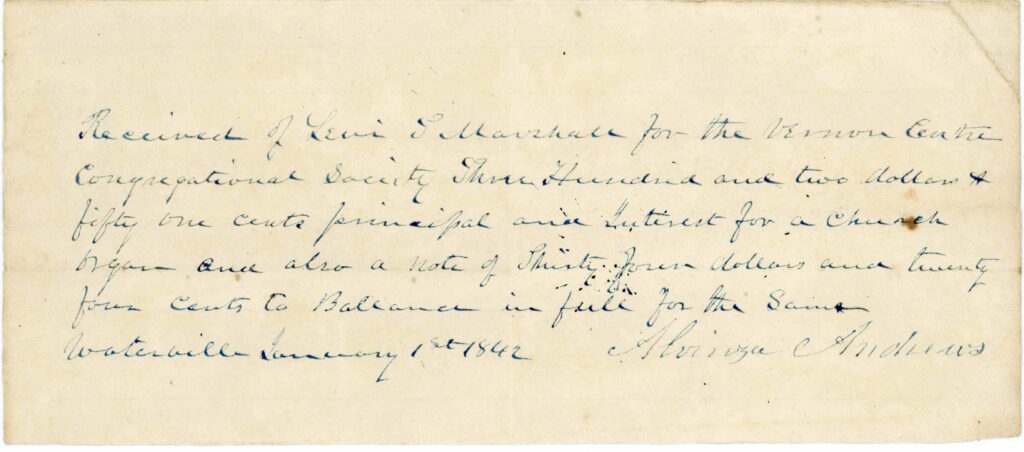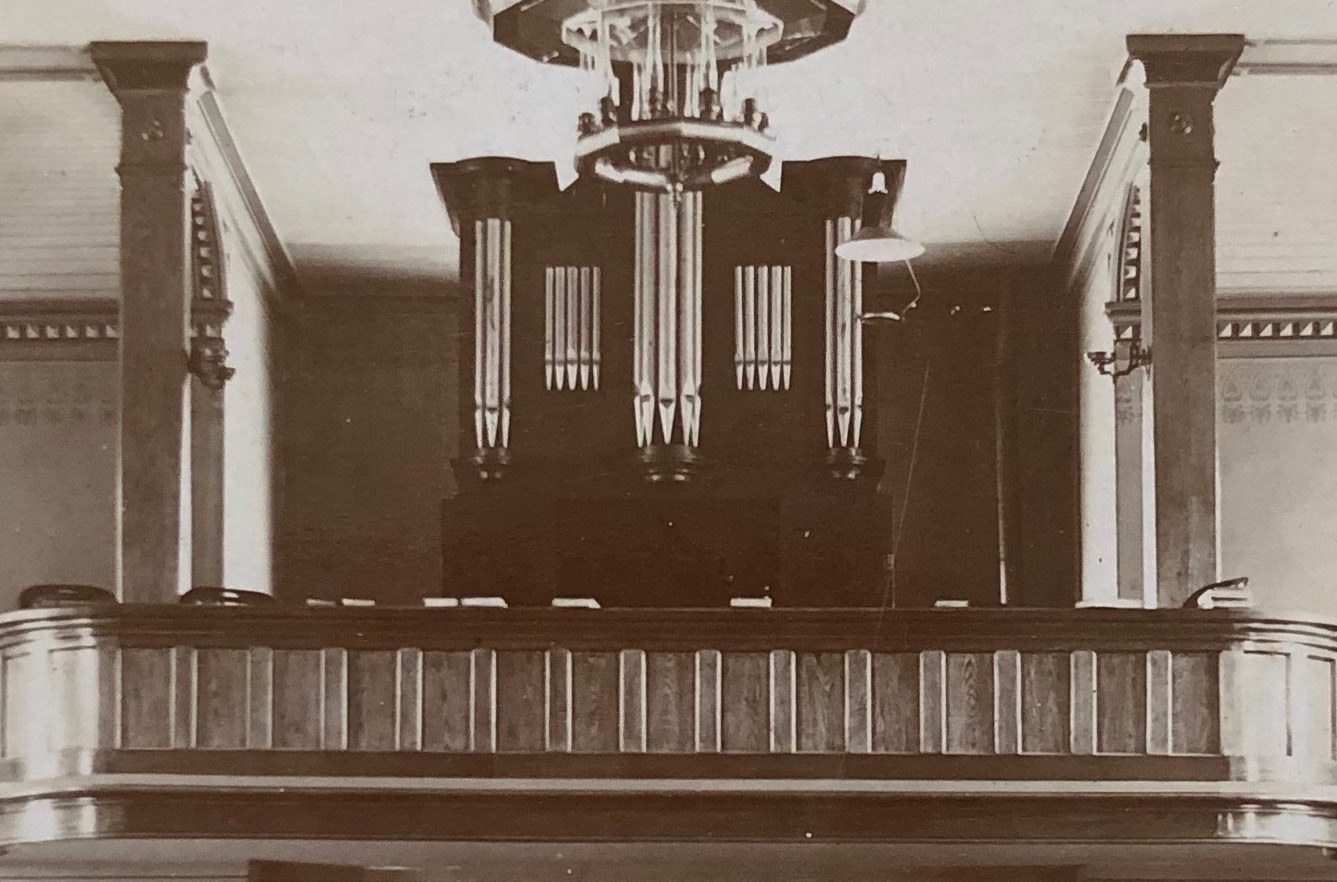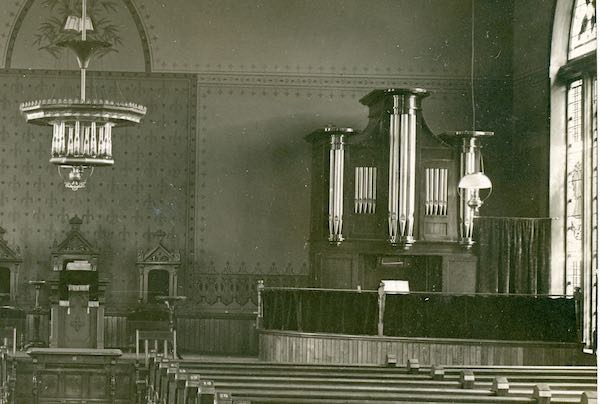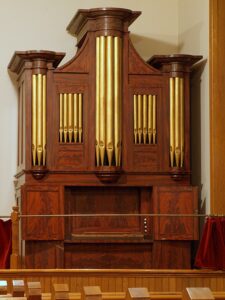The original pipe organ was built in 1837 by Alvinza Andrews and served the Vernon Center Presbyterian church for much of its history. It was “Opus 1”, or the first organ built by Andrews, a cabinetmaker who convinced Henry.T. Levi, a pipe-maker from the venerable E.G.G Hook & Co. in Boston, to join him in a new venture – making pipe organs in Waterville, NY.
Andrews hoped to take advantage of the burgeoning trade routes on the Chenango and Erie Canals to supply the growing number of new and expanding congregations in the region.
But the 1837 organ didn’t start its career here – it was first installed at the Mt. Vernon Presbyterian Church in Vernon. Not only was Levi the pipe builder, he was the original Mt. Vernon organist, commuting from Waterville to play and teach music each Sunday. But in 1842, the Mt. Vernon congregation decided to purchase a larger organ from Andrews. Vernon Center purchased this organ either in 1853 when Mt. Vernon received its larger organ, or on January 1, 1842 per the receipt shown here, and remained until 2007. The organ would have graced the recently moved and expanded Neo-classical sanctuary completed in 1840.

Well before electricity, or the advent of electric blower motors, someone would have to sit to the right of the organ pumping the air through a foot treadle. Initially, the organ was likely placed in the 1840 balcony. It is seen below around 1900 in the 1885 balcony. Moved in the early 1900s to the front, it operated there until the 1950s, when the blower motor in the basement was removed to make room for a bathroom with a flush toilet!


After 55 years perched in the balcony, the organ was moved in March, 1905 to the front of the church, at the right of the altar. An electric blower motor was installed below the floor. But in the late 1950s, that blower room became the bathroom, so the organ wasn’t used any longer, and was pushed up against the walls, and unfortunately some internal components were damaged.

Here’s additional info from the Pipe Organ Database:
Originally blown by a foot treadle, at some point a pump handle was added extending from the rear of the case, and this handle was moved to the case right at the time of the 1905 move, and this pumping system was supplied with a new rope in 1930. Subsequent to this repair, an electric blower was installed in the cellar beneath the organ. In the late 1950s, the blower was removed, its location converted to a bathroom, and the organ was pushed up against the wall where it sat unused until its removal in October 2007. Except for the especially crude post-1930 installation of swell shades, a spurious bass GGG# pipe, and the blower, the organ is remarkably preserved and otherwise unaltered.
The case is of pine, exquisitely faux grained in imitation of straight-grain and burl mahogany with gold-leafed wooden dummies. The rosewood keydesk is recessed behind doors, and never had pedals. The small ebony stopknobs have ivory labels lettered in script with square shanks, and are all mounted on the right side. The metal pipes are of common metal. All pipes longer than 3′ f are of pine. The double-rise reservoir has a single diagonal feeder, and preliminary experiments indicate the pressure is likely 50 mm or less.
The original foot treadle pumping system (found in the church while the organ was being dismantled) will be restored, and the later pumping system removed.
The instrument is a remarkably well preserved example of an early and thriving upstate New York organ trade.
In 2007, the organ was given to the S.L. Huntington & Co., who plan to someday place it on permanent loan to St. Timothy’s Episcopal Church in Westford, New York.
I’m hoping to someday find a way to bring it back to its historic Vernon Center home. Read about my efforts to find, see and learn more about the organ’s current whereabouts.
Another Andrews Organ can be seen and heard at the Oneida Baptist Church in Oneida, NY, by Andrews and Son, and made in their Utica, NY factory on the south bank of the Erie Canal.
Sources:
* Stephen L. Pinel: Organbuilding Along the Erie and Chenango Canals. 2009.
* Pipe Organ Database: Alvinza Andrews (Opus 1, 1837)